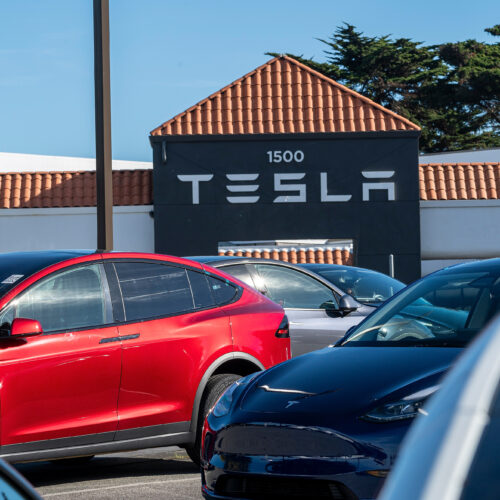Silicon Valley used to idolize youth. AI is changing that.

Pension 65/via REUTERS
- AI is reshaping tech hiring, reducing demand for entry-level roles in favor of experienced talent.
- SignalFire data shows a 50% drop in entry-level Big Tech hiring since pre-pandemic times.
- Tech firms now prioritize mid-senior hires, valuing experience over youthful potential.
For decades, Silicon Valley thrived on a mythology of youth. Tech giants and startups hired young, hungry employees who were relatively inexperienced but could work every waking hour to write code and ship product.
This era of youthful dominance in tech hiring may be fading, and it's partly due to the rise of AI. That's according to a new report from SignalFire, a venture capital firm that uses data and technology to guide its investment decisions.
Youth no longer at the center
In the past, young graduates were seen as hungry, moldable, and cost-effective hires. But today, new grads face the steepest employment challenges the tech industry has seen in years. SignalFire's latest State of Talent report reveals that entry-level hiring in Big Tech is down more than 50% from pre-pandemic levels, and startups aren't far behind.
"Tech startups have long been synonymous with youth," said Heather Doshay, a partner and head of talent at SignalFire. "But today, our data shows that many of those same early career professionals are struggling to find a way in."
Startups are mostly focused on survival, cutting burn rates, and extending runway. That means fewer hands, more output, and a demand for autonomous doers. In short, they want experienced individual contributors who can hit the ground running, not entry-level hires who require more management time and training.
"With reduced headcount, every hire must be high ROI," Doshay added. "Right now, that points squarely to mid-senior level individual contributors — autonomous doers who deliver against immediate company needs."
AI: The catalyst for a hiring reset
AI isn't the sole cause of this generational hiring shift, but it's a major catalyst. Asher Bantock, head of research at SignalFire, noted that AI tools are increasingly automating the types of narrowly scoped tasks that were once assigned to junior developers.
"What's increasingly scarce is not keystrokes but discernment," he told me. Crafting effective AI prompts, debugging machine-generated code, and integrating tools at scale requires architectural thinking, skills honed through years of experience, not a college diploma.
Data from SignalFire's new report reveals this trend:
- At Big Tech companies, new grads now account for just 7% of hires, with new hires down 25% from 2023 and over 50% from pre-pandemic levels in 2019.
- At startups, new grads make up under 6% of hires, with new hires down 11% from 2023 and over 30% from pre-pandemic levels in 2019.
- The average age of technical hires has increased by three years since 2021.
Big Tech companies are now focusing their resources on mid- and senior-level engineers, particularly in roles related to machine learning and data science. Meanwhile, functions like recruiting, design, and product marketing are shrinking across the board, the data also shows.
The "experience paradox"
This AI-driven shift has created what SignalFire calls the "experience paradox." Companies want junior hires to come pre-trained (just like those AI models!).
But young candidates often struggle to gain experience without being given a chance. It's a classic Catch-22, especially in a job market where 37% of managers say they'd rather use AI than hire a Gen Z employee, according to SignalFire's data.
Even top computer science grads from elite universities are struggling. The share of these graduates landing roles at the "Magnificent Seven" (Alphabet, Amazon, Apple, Meta, Microsoft, NVIDIA, and Tesla) has plummeted by more than half since 2022, according to SignalFire's report.

SignalFire
A cultural shift
This isn't just an economic or technical evolution, it's a cultural one. Where Silicon Valley once idolized youth, today's market prizes proven execution. Risk tolerance has dropped across the startup ecosystem, and with venture capital funding tightening, founders are hesitant to invest in long-term potential over short-term impact.
Interestingly, this has opened the door for more seasoned professionals. While C-suite hiring has also slowed, companies are increasingly turning to "fractional" roles — part-time CTOs, CMOs, and advisors — to access senior talent without inflating their burn rate, according to SignalFire.
More hustle than ever
For younger professionals, the path into tech now requires more creativity and hustle than ever. Bootcamps, freelancing, open-source contributions, and AI fluency are becoming critical entry points. Simply having a degree, even from a top school, is no longer enough.
For companies, the long-term risk of this shift is clear. Without reinvesting in early-career talent, the tech industry risks breaking its talent pipeline. While AI may temporarily reduce the need for junior hires, the future may still depend on building and training the next generation of technologists.
The mythology of youth in tech isn't dead, but in 2025, it's being rewritten.







